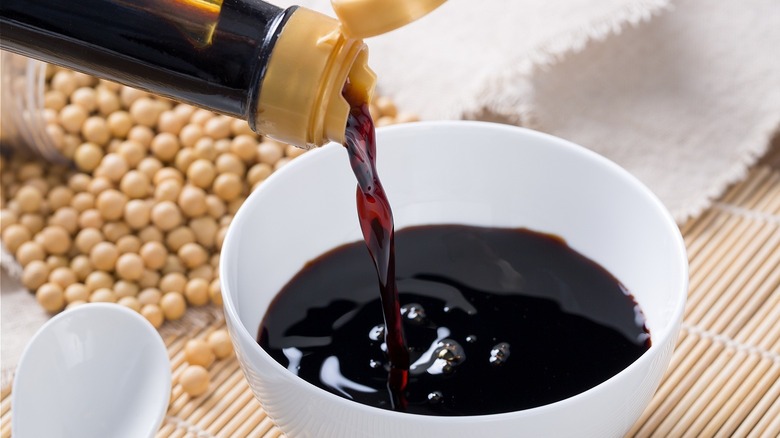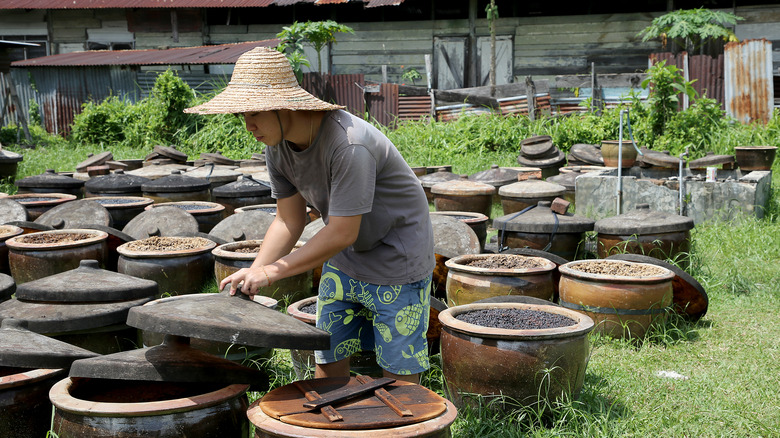The Bubbly Hack For Picking Out A Good Bottle Of Soy Sauce
Ever found yourself in an Asian market, staring at a wall of soy sauce, excited by the possibilities but not sure where to begin? So much sauce, so little time! Sure, you can learn the basic differences in type: There's dark soy sauce and light, low sodium and gluten-free varieties, but aside from all that, how do you pick a good one?
The answer, in one word, is bubbles. The presence of bubbles in your soy sauce is a sign of its quality. Cookingbomb on TikTok has shown us how it's done: She picks up a bottle and shakes it. Lots of small bubbles forming at the top are a sign of a better sauce. If the bubbles linger longer, that's more positive feedback. A good sauce boasts bubbles that are a rich amber hue and congregate around the top of the bottle even after the liquid had settled down, making it look rather foamy. Shaking the bottle is a great quick trick that doesn't require much of your precious time to execute.
But if you're wondering why this neat hack actually works, it's due to the fermentation that provides the backbone of soy sauce's irreplaceable flavor. Soy sauce has a pretty minimal list of ingredients: soybeans, wheat (in most cases), salt, and water — plus some microorganisms to kickstart the process. Fermentation affects the transformation from a soy-based goop to an aromatic sauce, and the right kind of bubbles confirm that the right chemical processes have taken place.
Reading the bubbles
There are different methods, but the essential way of making soy sauce is simple but specific. Soy beans are first mashed and boiled. (Good) bacteria is added to help get things going. After a few days, the mash — called koji — is ready for the next step, which includes additional fermentation agents and transforms the koji into a more liquid state referred to as moromi, acquiring a more intense flavor profile. The moromi is kept for several additional months before it is strained and refined, becoming what we know as soy sauce. Fermentation breaks down the proteins and carbohydrates in the soy mash, releasing gases. It's those gases which cause the bubbles to form, indicating that the fermentation process has worked its magic.
In some cases, the manufacturer will run water through the tanks of soybean mash two or even three times resulting in a thinner less flavorful product. Luckily, the bottle-shaking method can detect this unwanted shortcut, as the first extraction soy sauce has more body, deeper color, and produces more and longer-lasting bubbles.
But a note of caution: that same fermentation process that brings out depth of flavor can also go too far. When soy sauce has gotten a little too fermented, or has started to go bad, you will see big bubbles that pop quickly, which are pretty easy to distinguish from the type of little brown bubbles which indicate a solid sauce.
It's almost like ordering an espresso: the foam is a sign of a solid brew.

